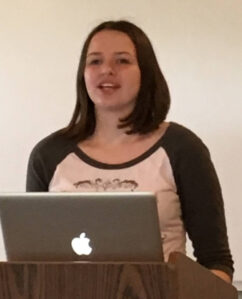From Perfect to Productive: How Letting Go Transformed My Workflow The Hidden Cost of Perfectionism


by T.L. Farris
Did you know that the English word ‘perfect’ comes from the Latin word ‘perfectus?’
It means “completed, excellent or accomplished.” However, the modern definition of perfection is instead “faultless, immaculate, something which doesn’t have a weakness.”
This modern definition is what many women are operating out of internally, and often battling. Perfectionists tend to believe the modern definition that perfection means without flaw or weakness, this belief keeps them trapped in eternal striving.
Because, the question becomes, how could anyone ever meet the standard of flawlessness?
This is the painful struggle of the perfectionist. Continually striving everyday to meet an impossible standard in everything they do. Feeling like, and reminding themselves, that they can never “measure up.”
As a perfectionist your thoughts swirl and mock you for your lack of perfection. In everything you set out to do as a perfectionist, you feel a pressure to meet this impossible standard.
It may seem that a “procrastinating perfectionist” would be an oxymoron, but really a perfectionist will procrastinate just as much if not more than a non-perfectionist because of the Lie of Perfect.
“Dear weary perfectionist, there is a better way.” – Denise Fitsham Jones
Perfectionism is something I have greatly struggled with in my life. My name literally means perfect. No pressure there, right? Not to mention the fact that I am the oldest child in my family and therefore the one who “must get everything right to be an example for all the others” as my internal dialogue has demanded since I was little.
Since I was young, I can remember my inner voice constantly reminding me that if I didn’t do things absolutely perfectly, flawlessly, I would not be worthy of love or respect. I didn’t feel my parents, or my siblings would look at me the same if I didn’t meet this impossible standard I had placed on myself.
Of course, this mentality carried over and followed me into adulthood until I learned three simple steps.
Step 1: Seek God
As humans, we tend to think we can do things on our own. We set unreachable goals. Embark on ridiculous journeys. We live with a sense of independence and feel we are more than capable of creating our own lives while accomplishing everything we set our hands to without anyone’s help, but the truth is we were created to be in relationship with God.
Our Father in Heaven designed us to do everything with Him, in us, and through us.
We were created to be His friends, His children and because of that, He wants to be a part of our lives in every capacity.

When we seek Him and spend time with Him, we become more like Him; we see things the way He sees them; we see ourselves the way He sees us. Think about spending time with your friends or family. The more time you spend with them the more likely you are to know what their opinions are on a particular subject, how they see you, what they think about you and who you are, you may even begin to talk like them or use the same mannerisms. The more time you spend with them the more you are like them.
This same thing applies to God. The more time we spend with Him, the more we are like Him, and the easier it is to both see and believe the truth about who we are. It is so much easier to see that we are complete (the true meaning of perfect) in Him.

It is our great joy to seek Him in our everyday lives. I do this in my own life by reading my Bible as part of my morning routine, playing worship music, praying, etc. I start my day by engaging with my Father in Heaven and from there I continue to converse with Him as my day progresses and as each task arises.
He is the power and love we need to succeed. When we seek Him, not only do we become more like Him, making it easier to see and believe the truth, but we also are made better and stronger. So, to defeat the lie of perfect we must first Seek God.
Step 2: See the Lie
“Perfectionism is self-abuse of the highest order.” – Anne Wilson Schaef
The true meaning of perfect is complete, and we are only complete in Him. We were made in His image, and we were made whole by His hand. When you are outside of Him, you can get caught up in feeling less than or not enough; when you believe the lie of perfect, you spend all your time, energy, and emotion trying to achieve “perfect.” Everything you do strives to meet the invisible standard and leaves you in a state of exhaustion and exasperation.
When you see the lie when you know that perfect doesn’t mean “flawless”, you can defeat it.
Our Father in Heaven is a good Father and one who created us in His image, He didn’t create us broken. Those “weaknesses” and “flaws” are part of our complete and finished being. He isn’t waiting for us to grow up so He can fix those things and make you whole later, no He created you whole and complete from day one.
“Perfectionism doesn’t make you feel perfect; it makes you feel inadequate.” – Maria Shriver
The lie here isn’t just that perfection is “flawless”, but it is also that in everything you do, you just aren’t enough.
This is something I battled every day for a long time. I would approach every task with the understanding that no matter what effort I put in, it would never reach the level of perfection I expected or that I believed others expected of me.
When I would design graphics, I would only receive positive feedback but then as I started to experiment and begin learning new skills some of my designs would require some editing. Every time I was asked to make a change, even something small it felt as though I had failed, my effort had not met my expectation of flawless perfection.

Eventually I could see that flaws were an opportunity to grow and learn but it took time. I had to defeat the lie to believe the truth and it started with seeing the lie and acknowledging that it was a lie.
When you see the lie, you can define “perfect” correctly and you can rid yourself of those feelings of inadequacy. Perfect simply means completed. When you complete something, it is “perfect” no matter the result.

Step 3: Embrace Your Weaknesses
You have weaknesses. You can’t do everything alone. That’s okay! We all have limits and weaknesses. None of us are flawless. That is the lie. The idea that anyone would have no weaknesses is impossible, and it creates that unreachable standard of perfection.
In our need to be flawless, we can try to cover up or ignore our weaknesses. We try to hide our limitations playing a smoke and mirrors game to keep up appearances.
Mistakes & failures are how we learn, without “weaknesses” we wouldn’t need to learn or grow. They are opportunities for us. Life would be pretty boring if it didn’t get messy once in a while and that requires mistakes!
Making mistakes can lead to some of the greatest discoveries just ask Thomas Edison.
The Truth
The bondage of perfectionism has no hold on those that know the truth: “perfect” is a lie.
You won’t get caught up fighting to be flawless because you know you do in fact have flaws, but they were intentionally part of your design. Flaws are an invitation to learn and grow.
So, stop striving for the impossible standard of perfection. Set yourself free from the frustration and pain of always feeling like you’re not enough. Understand that “perfect” really just means complete. Which, of course, you are and so is everything you do.
When I was always fighting to be perfect, I was paralyzed by the fear that I would fail or make a mistake. My productivity took a nosedive. Every task felt too big to bear. All because I was putting the weight of “flawless” on my shoulders.
Now, my productivity is amazing because I’ve come to understand the truth. Perfectionism is no longer my foe. Mistakes don’t scare me. I can do my best and it will be more than enough. To transform your workflow you must first overcome perfectionism.



